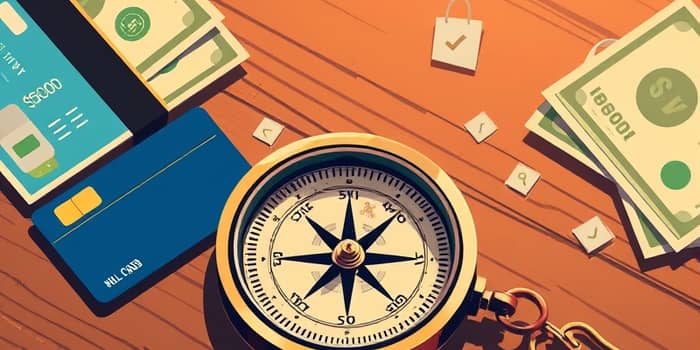
Credit cards have become ubiquitous companions in our daily lives, offering convenience, rewards, and the promise of financial flexibility. Yet without a clear plan, they can quickly become a burden, leading to mounting debt and sleepless nights. This guide will serve as your financial GPS, helping you understand the landscape of credit card use in 2025, identify potential pitfalls, and chart a course toward a secure and empowered financial future.
As of Q1 2025, US credit card debt stands at $1.18T, down slightly from its record $1.21 trillion in late 2024. Despite this marginal decline, the figure remains historically high, reflecting the widespread reliance on revolving credit to bridge gaps between income and expenses.
Nearly half of all cardholders carry a balance month to month, illustrating how easily small charges can accumulate. With an average card debt of $7,321 among those with unpaid balances, many families find themselves juggling payments to avoid late fees and escalating interest charges. Understanding these realities is the first step toward responsible management.
A quick snapshot of key metrics highlights recent shifts in borrowing and repayment trends:
Making only the minimum payment may feel like a lifeline when budgets are tight, but this approach can be a financial trap. At typical APRs nearing 30%, the interest alone on a large balance can outpace your principal reduction for months or even years.
For instance, a $5,000 balance with a 29.99% APR and a 2% minimum payment might take over two decades to fully repay, with thousands of dollars paid in interest alone. To break free from this cycle, focus on reducing your balance aggressively and resist the temptation of low initial payments.
Before reaching for your plastic, consider these core principles to keep your finances on track:
Credit card fraud is a growing threat, with U.S. losses expected to reach $12.5 billion in 2025. E-commerce fraud has surged by 140% over three years, making vigilance crucial for cardholders of all ages.
Set up real-time alerts for every transaction, regularly review statements for unauthorized charges, and consider using virtual card numbers for online purchases. Monitor your account for suspicious activity and report anomalies immediately to your card issuer to minimize potential damage.
Responsible credit card use isn’t just about avoiding debt; it’s also an opportunity to build a resilient financial future. A solid credit history can unlock lower interest rates on mortgages, auto loans, and personal lines of credit, saving you thousands over a lifetime.
Start by paying at least the minimum due on time, every time. If you’re new to credit, consider a secured card or become an authorized user on a trusted family member’s account. Gradually increase your credit limit only as your income and repayment ability grow.
As digital wallets capture more of the transaction market—now accounting for roughly 50% globally—the role of traditional credit cards is evolving. Consumers are seeking seamless, secure payment experiences, prompting issuers to innovate with tokenization, biometric authentication, and integrated budgeting tools.
Economic uncertainty and rising fraud rates mean that your financial GPS must be recalibrated regularly. Stay informed about shifting interest rates, explore balance transfer options when rates peak, and keep an eye on emerging payment solutions that could complement or replace traditional cards.
Using credit cards responsibly is not about restriction, but about empowerment. By understanding the numbers, avoiding costly mistakes, and leveraging the right strategies, you can transform your credit cards from potential pitfalls into productive financial tools. Let this guide be your compass, pointing you toward greater confidence and stability in managing your financial journey.
References













